| 
Saltwater Fishing and Boating NewsletterIn this issue:Horseshoe crabs come onshore to New York beaches in May and June to mate and lay eggs during the evening high tides throughout the new and full moon periods. In 2025, the DEC has implemented four 5-day harvest closures around peak spawning “moons” in May and June to allow crabs to spawn uninterrupted and leave more eggs on the beach, increasing reproductive success and shorebird foraging opportunities. This year’s May horseshoe crab harvest closures are May 10-14 and May 24-28. All commercial harvest of horseshoe crab is prohibited during these periods. DEC asks the public to report violations of this harvest closure to the DEC Law Enforcement Dispatch Center (24/7) by calling 1-844-DEC-ECOS (1-844-332-3267).
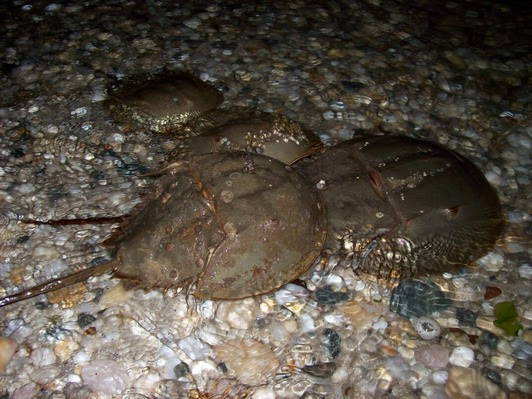 For more information, please review the Horseshoe Crab Quota Distribution Plan (PDF).The New York Horseshoe Crab Monitoring Network will be kicking off the 2025 Horseshoe Crab Spawning Survey on May 10, 2025. This survey takes place around the nighttime high tides during the full and new moons in May and June. Thirty sites are monitored throughout the marine district. During each survey night, participants help count and tag horseshoe crabs and can observe horseshoe crabs spawning on our beaches. If you are interested in participating, visit the Horseshoe Crab Monitoring Network website to find out how to get involved! For more information, please review the Horseshoe Crab Quota Distribution Plan (PDF).The New York Horseshoe Crab Monitoring Network will be kicking off the 2025 Horseshoe Crab Spawning Survey on May 10, 2025. This survey takes place around the nighttime high tides during the full and new moons in May and June. Thirty sites are monitored throughout the marine district. During each survey night, participants help count and tag horseshoe crabs and can observe horseshoe crabs spawning on our beaches. If you are interested in participating, visit the Horseshoe Crab Monitoring Network website to find out how to get involved!
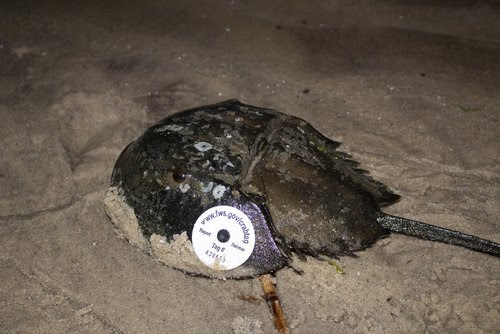 Scup (Porgy) Scup (Porgy)
Shore Based Anglers Minimum Size: 9.5"
Vessel Based Anglers Minimum Size: 11"
Possession Limit: 30 Fish
Open Season: May 1 - Dec. 31Scup (Porgy) Party/Charter Boat AnglersMinimum Size Limit: 11"
Possession Limit: 30/40/30
Open Season: May 1 - Aug 31/ Sept. 1 - Oct. 31/ Nov. 1 - Dec. 31Scup Image Courtesy of ASMFC
 Summer Flounder Summer Flounder
Minimum Size: 19" / 19.5"
Possession Limit: 3 Fish
Season: May 4 - Aug. 1 / Aug. 2 - Oct. 15Summer Flounder Image Courtesy of ASMFC
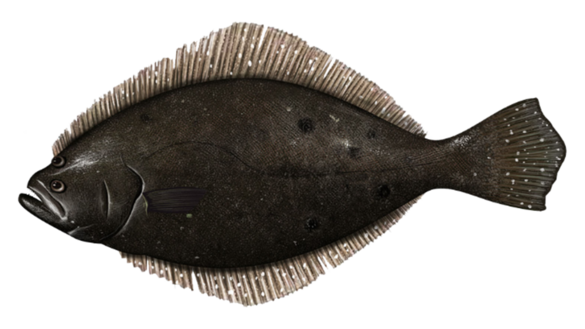 DEC reminds all commercial and recreational lobster permit holders that the annual closure of Lobster Management Area 4 (LMA 4) will take place from April 30 – May 31. For more information about commercial management measures, visit the DEC Lobster Crab and Whelk Limits webpage.For more information about recreational lobster limits, visit recreational fishing regulations. DEC reminds all commercial and recreational lobster permit holders that the annual closure of Lobster Management Area 4 (LMA 4) will take place from April 30 – May 31. For more information about commercial management measures, visit the DEC Lobster Crab and Whelk Limits webpage.For more information about recreational lobster limits, visit recreational fishing regulations.
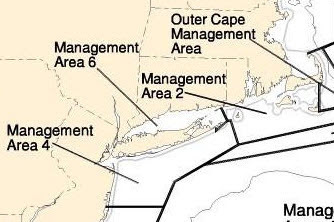 Dead sharks and sturgeon will occasionally wash ashore. These mortalities can occur due to fishery interactions, boating, predation, parasitism, or other natural causes. The DEC collects information on the location, species, length, sex, and condition of these deceased individuals. If possible, the carcass is retrieved by DEC staff and a necropsy (animal autopsy) will be conducted to identify a potential cause of death. Biological samples are collected and shared with several academic and scientific researchers in New York and across the country to facilitate multiple ongoing biological studies. These efforts improve our understanding on these mortalities which can help inform fisheries management.If you encounter a dead shark or sturgeon, please do not handle the fish and leave it where you found it. Possession of these individuals are prohibited. You can help the DEC salvage program by reporting observations of these deceased animals to DEC’s Marine Life Incident Report online survey or by calling: Dead sharks and sturgeon will occasionally wash ashore. These mortalities can occur due to fishery interactions, boating, predation, parasitism, or other natural causes. The DEC collects information on the location, species, length, sex, and condition of these deceased individuals. If possible, the carcass is retrieved by DEC staff and a necropsy (animal autopsy) will be conducted to identify a potential cause of death. Biological samples are collected and shared with several academic and scientific researchers in New York and across the country to facilitate multiple ongoing biological studies. These efforts improve our understanding on these mortalities which can help inform fisheries management.If you encounter a dead shark or sturgeon, please do not handle the fish and leave it where you found it. Possession of these individuals are prohibited. You can help the DEC salvage program by reporting observations of these deceased animals to DEC’s Marine Life Incident Report online survey or by calling:- 845-256-3073 for sturgeon found in the Hudson River Region.
- 631-444-0444 for sharks and sturgeon found in New York’s marine waters.
When reporting a shark or sturgeon: Please specify the exact coordinates, estimate the total length, describe the condition (fresh or decomposed) identify if there are any signs of trauma present, and take photographs of the entire individual.Photo Courtesy of NOAA: Atlantic SturgeonAs part of the Access Point Angler Intercept Survey, DEC is launching a project to obtain better data on the size and survival of fish released by recreational saltwater anglers. Since data is already collected from for-hire boats, private anglers throughout New York's marine district will receive a pencil, measuring tape, and waterproof “catch card” to log the species, number, and size of released fish, along with a QR code for more info. After your trip, return the pre-paid postage card or email a photo to RecDiscards@dec.ny.gov. Your input helps improve fishery management and ensures better fishing for everyone.Example of Catch Card
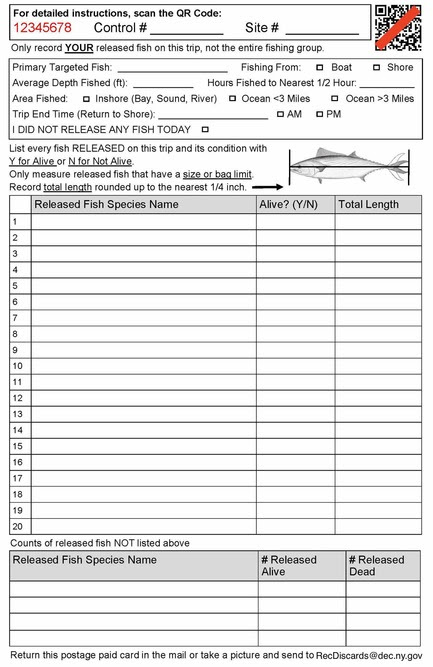 |
|
|
|
|
|